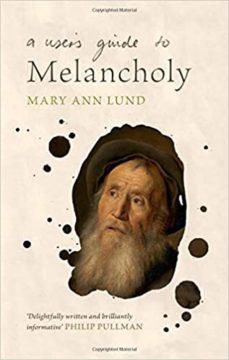Nicholas Lezard at The Guardian:
 Mary Ann Lund’s book serves as an introduction not just to Burton’s magnum opus but to contemporary and historical conceptions of melancholy. Do not make the mistake of confusing “melancholy” with what we now call depression. Her brief is not so much to say why or how Burton’s style is so delightful but to give us a learned, broad and readable picture of Renaissance medicine, using Burton’s book as a starting point. Melancholy, in the early modern world, could present itself in bizarre ways. Think “Embarrassing Early Modern European Bodies”. She tells, for instance, the story of the classical scholar Isaac Casaubon (1559-1614), whose “postmortem revealed that his bladder was malformed and that the supplementary bladder was nearly six times as large as the main chamber”. The apparent reason was that he had regularly ignored the call of nature while being absorbed in his work. (That George Eliot chose the name for the dry-as-dust obsessive in Middlemarch is no coincidence; but I am not sure she knew about the bladder. Burton, whom she would have read, doesn’t mention it, but does cite Casaubon a couple of times.)
Mary Ann Lund’s book serves as an introduction not just to Burton’s magnum opus but to contemporary and historical conceptions of melancholy. Do not make the mistake of confusing “melancholy” with what we now call depression. Her brief is not so much to say why or how Burton’s style is so delightful but to give us a learned, broad and readable picture of Renaissance medicine, using Burton’s book as a starting point. Melancholy, in the early modern world, could present itself in bizarre ways. Think “Embarrassing Early Modern European Bodies”. She tells, for instance, the story of the classical scholar Isaac Casaubon (1559-1614), whose “postmortem revealed that his bladder was malformed and that the supplementary bladder was nearly six times as large as the main chamber”. The apparent reason was that he had regularly ignored the call of nature while being absorbed in his work. (That George Eliot chose the name for the dry-as-dust obsessive in Middlemarch is no coincidence; but I am not sure she knew about the bladder. Burton, whom she would have read, doesn’t mention it, but does cite Casaubon a couple of times.)
more here.
